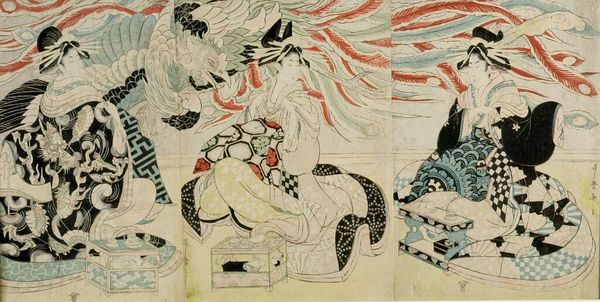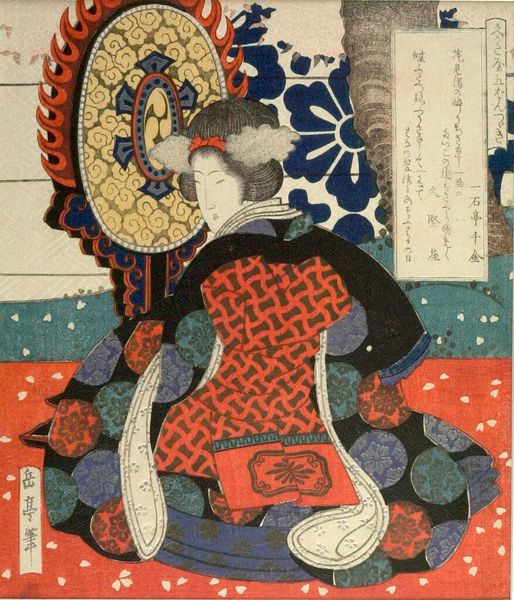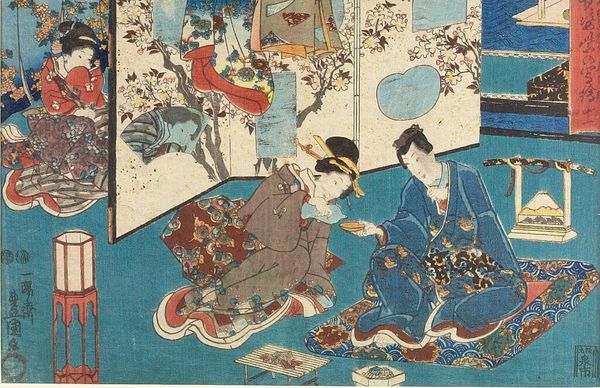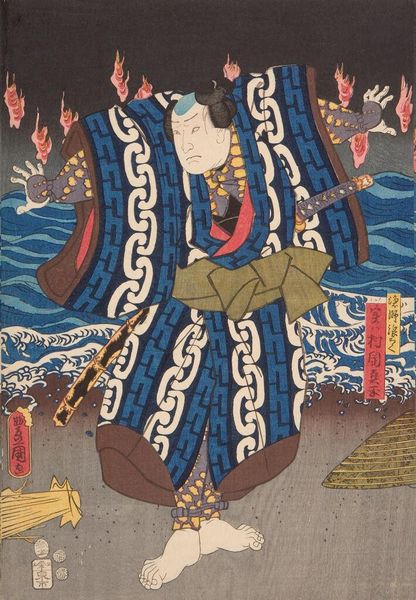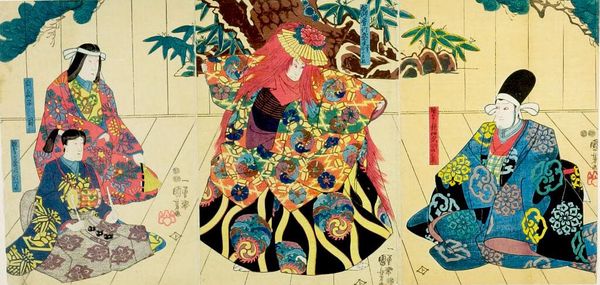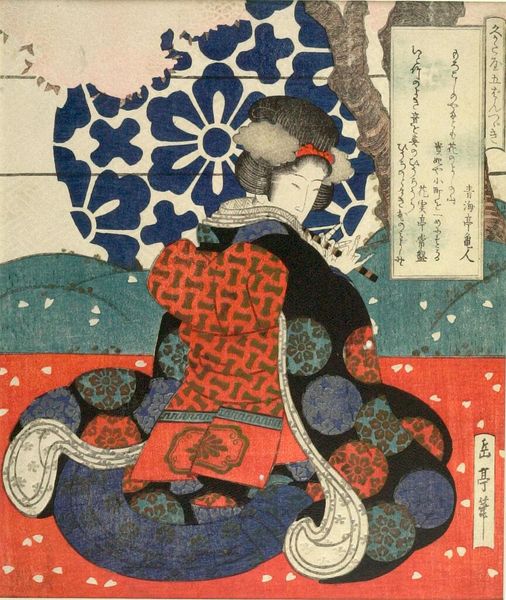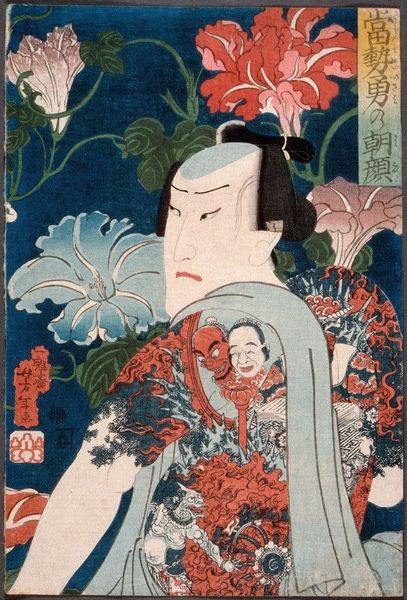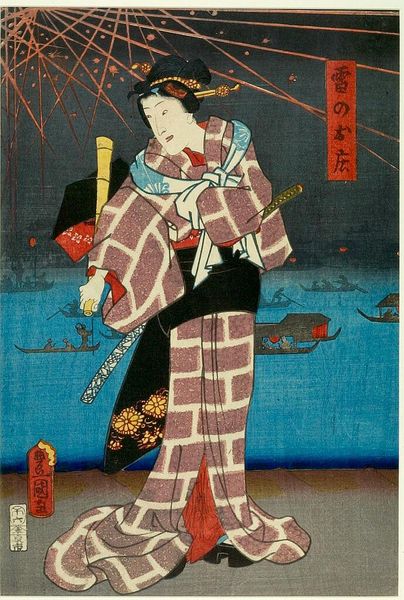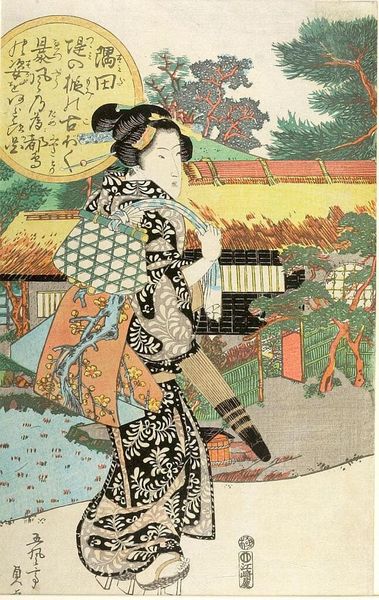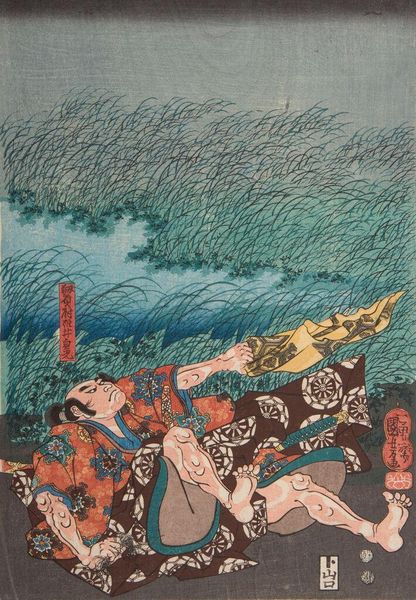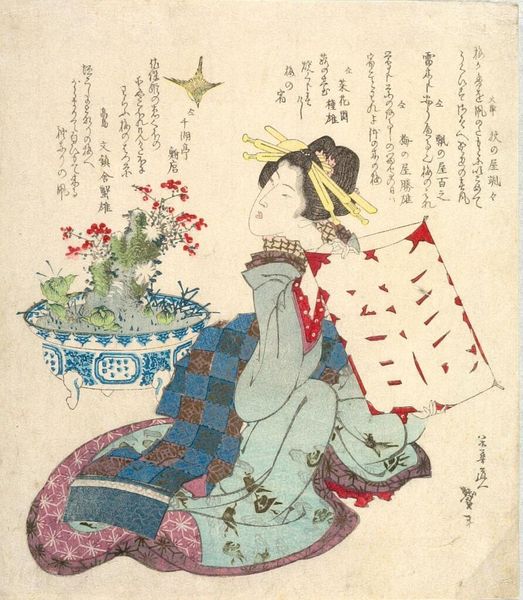
Ban Danemon Naoyuki Conquers the Old Raccoon Dog at Fukushima’s Mansion 1866
0:00
0:00
print, woodblock-print
#
portrait
#
narrative-art
# print
#
asian-art
#
ukiyo-e
#
figuration
#
woodblock-print
Copyright: Public Domain: Artvee
Editor: So, here we have Yoshitoshi’s woodblock print from 1866, "Ban Danemon Naoyuki Conquers the Old Raccoon Dog at Fukushima’s Mansion." It's vibrant! All the patterns in the clothing jump out, and the face is so expressive. What stands out to you? Curator: Immediately, I’m drawn to the process itself. Consider the labor involved in carving those blocks for each color, aligning them perfectly for the print. It speaks to a whole workshop ecosystem, a means of production not just artistic expression. How does that labor change the meaning of the narrative here? Editor: I guess it means the image wasn't necessarily meant to be a singular piece, but almost... manufactured? What would these have been used for? Curator: Exactly! And think about woodblock prints within the context of *ukiyo-e* – the "floating world." They were mass-produced, consumed by a wide audience, not just elites. The heroic narrative itself is commodified, transformed into a consumer object. Is this just entertainment, or social commentary? What does the *means* of production say about its message? Editor: So it’s less about the hero, Ban Danemon, and more about how that story becomes a product of its time. Almost like… early mass media? I never thought about it that way. Curator: Precisely. The artistry is inseparable from its material conditions. Think too about the distribution networks. Where did prints like this end up? Who consumed them and what were their values? Editor: Fascinating. It definitely gives a whole new perspective to see how art and commercialism intersect. Curator: And hopefully it reminds us that art, however "high" it seems, always exists within, and is shaped by, its material reality.
Comments
No comments
Be the first to comment and join the conversation on the ultimate creative platform.
